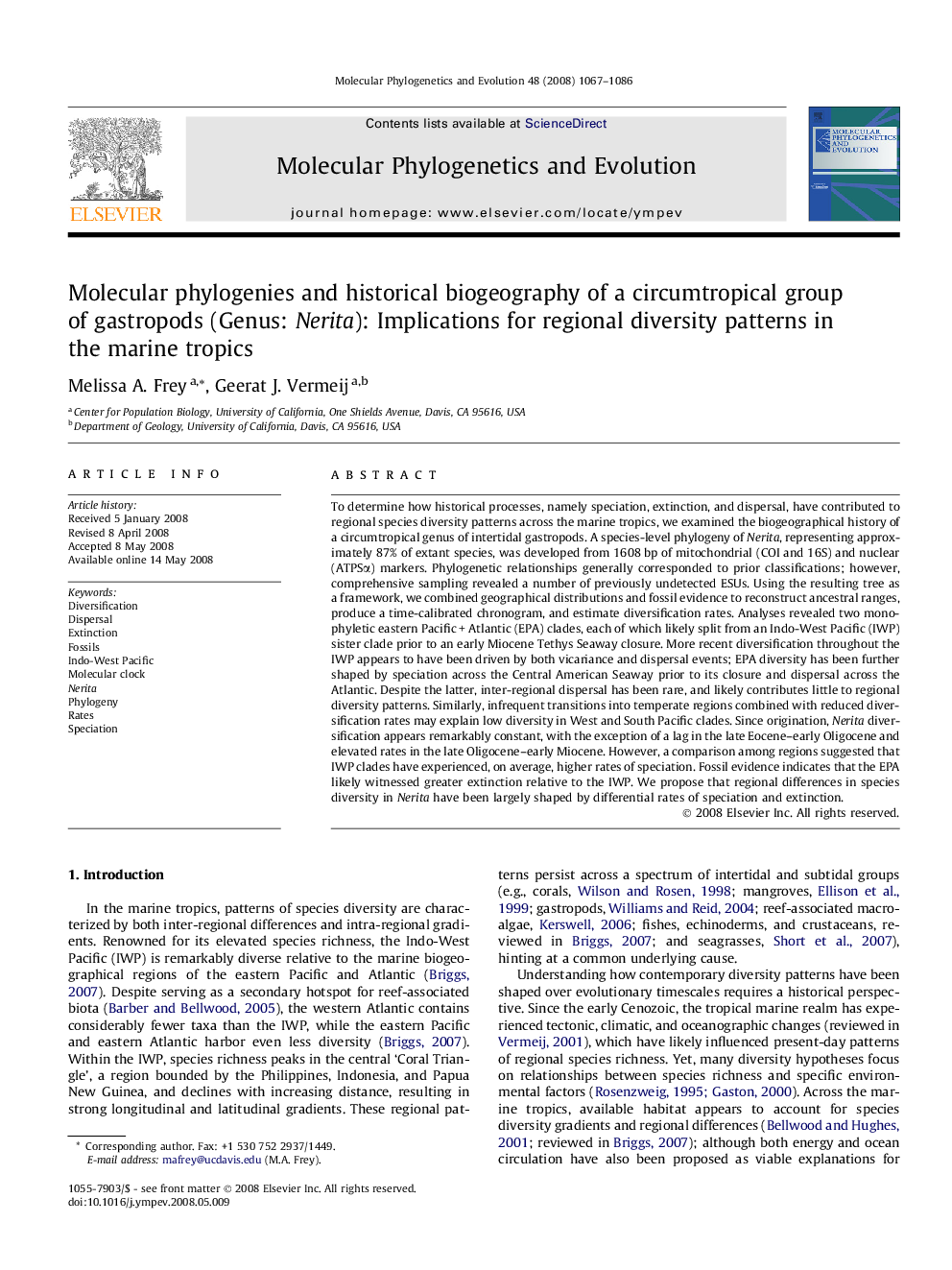| کد مقاله | کد نشریه | سال انتشار | مقاله انگلیسی | نسخه تمام متن |
|---|---|---|---|---|
| 2835163 | 1164334 | 2008 | 20 صفحه PDF | دانلود رایگان |

To determine how historical processes, namely speciation, extinction, and dispersal, have contributed to regional species diversity patterns across the marine tropics, we examined the biogeographical history of a circumtropical genus of intertidal gastropods. A species-level phylogeny of Nerita, representing approximately 87% of extant species, was developed from 1608 bp of mitochondrial (COI and 16S) and nuclear (ATPSα) markers. Phylogenetic relationships generally corresponded to prior classifications; however, comprehensive sampling revealed a number of previously undetected ESUs. Using the resulting tree as a framework, we combined geographical distributions and fossil evidence to reconstruct ancestral ranges, produce a time-calibrated chronogram, and estimate diversification rates. Analyses revealed two monophyletic eastern Pacific + Atlantic (EPA) clades, each of which likely split from an Indo-West Pacific (IWP) sister clade prior to an early Miocene Tethys Seaway closure. More recent diversification throughout the IWP appears to have been driven by both vicariance and dispersal events; EPA diversity has been further shaped by speciation across the Central American Seaway prior to its closure and dispersal across the Atlantic. Despite the latter, inter-regional dispersal has been rare, and likely contributes little to regional diversity patterns. Similarly, infrequent transitions into temperate regions combined with reduced diversification rates may explain low diversity in West and South Pacific clades. Since origination, Nerita diversification appears remarkably constant, with the exception of a lag in the late Eocene–early Oligocene and elevated rates in the late Oligocene–early Miocene. However, a comparison among regions suggested that IWP clades have experienced, on average, higher rates of speciation. Fossil evidence indicates that the EPA likely witnessed greater extinction relative to the IWP. We propose that regional differences in species diversity in Nerita have been largely shaped by differential rates of speciation and extinction.
Journal: Molecular Phylogenetics and Evolution - Volume 48, Issue 3, September 2008, Pages 1067–1086